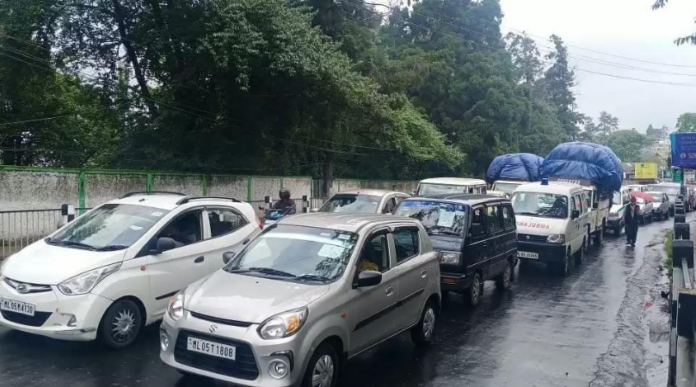Shillong:
The Division Bench of Meghalaya High Court comprising Chief Justice Sanjib Banerjee and Judge W. Diengdoh have observed that the city of Shillong is bursting at its seams and there is no space to expand in view of the nature of the terrain and the problem seems to be increasing with each passing day as the number of vehicles increases and, upon the curbs imposed due to the pandemic being eased, more and more people are coming out.
“Though a fancy report has been filed by the State through the Secretary, Home (Police) Department, incorporating aerial pictures of the major junctions and areas of traffic bottleneck in the city of Shillong, there is little by way of commitment, planning or measures spelt out to tackle the traffic problem in the state capital, which is the subject-matter of the present public interest litigation,” the court stated in its order on Thursday.
Several sections of the report refer to certain development projects being in the offing, whether for parking or for regulating traffic or for making it easier for pedestrians, without any timeline or the slightest indication as to whether what is expressed in the report is a mere pipe dream.
The court viewed that tourism being a major industry in the state and Shillong being the premier hill station here, there is increasing footfall in the state capital.
The Division Bench also noted that the report does not indicate any previous plan or implementation thereof or even a present plan and its implementation within the foreseeable future.
“Certain vague measures are indicated and it does not appear from the report as to whether the measures indicated have been accepted or adopted or proposed by the State government or there is anything official about such measures or their implementation. At the highest, the report can be treated as a preliminary wish-list that cries out for a more detailed roadmap with timelines to be indicated, not only to deal with the present problem but also to make projections and be able to deal with the situation that may arise in 2025 and even in 2030,” the Court stated.
The court has expressed concern that even though a previous petition pertaining to the traffic congestion and chaos in the city of Shillong was disposed of by an order dated November 15, 2019 with the court exercising exemplary self-restraint by observing that no writ in the nature of mandamus could be issued as prayed for, the court’s request to the state to consider the suggestions indicated in paragraphs 9 and 10 of the writ petition may have gone completely unheeded.
The court further said that there is no reference in the present report to the previous matter or the promises made by the state government as recorded in such order or even the request of the Court to consider the suggestions as put forth by the then writ petitioner.
It is only after S.P. Mahanta, Senior Advocate, who had instituted the previous petition in his own name, seeking to intervene in the present proceedings, that the order dated November 15, 2019 passed in PIL No. 13 of 2019 has come to light.
“There is no doubt that the executive has the exclusive authority to deal with matters pertaining to traffic congestion, the regulation of vehicles and the plans in such regard that must be put in place upon taking the usual increase in number into account. Unfortunately, as in other matters pertaining to the preservation of the environment, tackling illegal mining operations in the State and the like, there does not appear to be any serious or concerted effort or roadmap of the State government in such key areas that require serious governance and immediate attention,” the Court stated.
The Court further said, “If it is necessary, the State government has to engage with the autonomous hill councils to improve the lot of the general people and to ensure that the possible problems are anticipated and a plan of action put in place for, say, five or ten years or even beyond.”
The matter will be listed on March 17.


